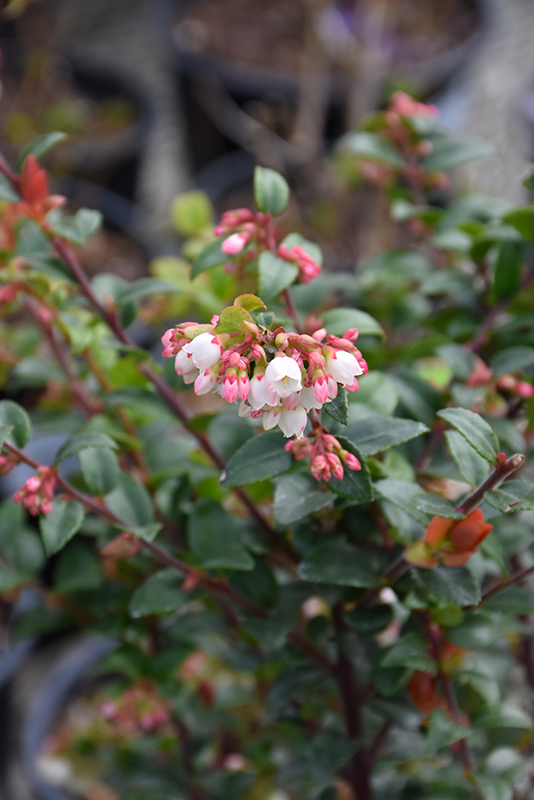>> Home
Height: 6 feet
Spread: 5 feet
Sunlight:
![]()
![]()
Hardiness Zone: 7a
Other Names: Evergreen Huckleberry, California Huckleberry
Description:
An attractive, landscape shrub with vivid red-bronze new leaves, maturing to dark green; pale pink, bell-shaped flowers in spring produce dark blue berries in summer; growth habit is upright and bushy; needs acidic, well drained soil, plant with peat moss
Ornamental Features
Box Huckleberry is primarily grown for its highly ornamental fruit. It features an abundance of magnificent navy blue berries with black overtones from mid to late summer. It has attractive dark green evergreen foliage which emerges coppery-bronze in spring. The small glossy oval leaves are highly ornamental and remain dark green throughout the winter. It features dainty clusters of shell pink bell-shaped flowers with white overtones hanging below the branches from mid to late spring, which emerge from distinctive rose flower buds. The smooth gray bark and antique red branches add an interesting dimension to the landscape.
This plant is primarily grown as an ornamental, but it's also valued for its edible qualities. The small round tart berries are most often used in the following ways:
- Cooking
- Baking
- Preserves
- Sauces
Landscape Attributes
Box Huckleberry is a multi-stemmed evergreen shrub with an upright spreading habit of growth. Its relatively fine texture sets it apart from other landscape plants with less refined foliage.
This is a relatively low maintenance shrub, and usually looks its best without pruning, although it will tolerate pruning. It is a good choice for attracting birds and hummingbirds to your yard. It has no significant negative characteristics.
Box Huckleberry is recommended for the following landscape applications;
- Mass Planting
- Hedges/Screening
- General Garden Use
- Naturalizing And Woodland Gardens
- Container Planting
Planting & Growing
Box Huckleberry will grow to be about 6 feet tall at maturity, with a spread of 5 feet. It tends to be a little leggy, with a typical clearance of 1 foot from the ground, and is suitable for planting under power lines. It grows at a medium rate, and under ideal conditions can be expected to live for approximately 30 years. While it is considered to be somewhat self-pollinating, it tends to set heavier quantities of fruit with a different variety of the same species growing nearby.
This shrub does best in full sun to partial shade. It does best in average to evenly moist conditions, but will not tolerate standing water. It is very fussy about its soil conditions and must have sandy, acidic soils to ensure success, and is subject to chlorosis (yellowing) of the foliage in alkaline soils. It is quite intolerant of urban pollution, therefore inner city or urban streetside plantings are best avoided, and will benefit from being planted in a relatively sheltered location. Consider applying a thick mulch around the root zone in winter to protect it in exposed locations or colder microclimates. This species is native to parts of North America.
Box Huckleberry makes a fine choice for the outdoor landscape, but it is also well-suited for use in outdoor pots and containers. With its upright habit of growth, it is best suited for use as a 'thriller' in the 'spiller-thriller-filler' container combination; plant it near the center of the pot, surrounded by smaller plants and those that spill over the edges. It is even sizeable enough that it can be grown alone in a suitable container. Note that when grown in a container, it may not perform exactly as indicated on the tag - this is to be expected. Also note that when growing plants in outdoor containers and baskets, they may require more frequent waterings than they would in the yard or garden.
